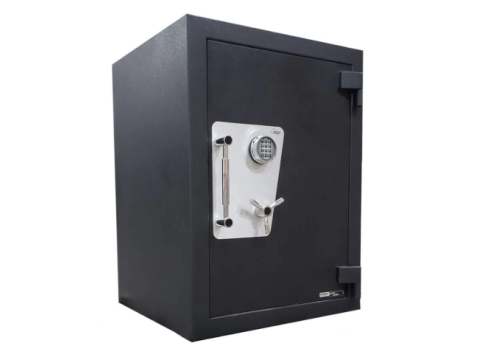Comprehensive Guide to Safe Security Systems
Safes serve as a secure storage solution for:
- Firearms
- Controlled substances
- Valuables such as cash, jewelry, and important documents
To ensure their effectiveness, safes should be equipped with advanced security systems, particularly those capable of sending alerts to centralized monitoring stations or GSM-connected devices.
Common Threats to Safe Security
To design a robust safe security system, it is essential to address the following vulnerabilities:
- Forced Entry:
- Picking locks or brute-forcing doors.
- Cutting, drilling, or melting the walls or door.
- Safe Removal:
- The safe being physically stolen for later tampering.
Methods and Tools for Safe Protection
1. Deterrence Measures
- Contact Sensors: Detect door openings.
- Vibration Sensors: Detect cutting or drilling attempts.
- Heat Sensors: Detect burning or other heat-intensive tampering.
2. Anti-Removal Measures
- Tilt and Motion Sensors: Installed inside the safe to detect unauthorized movement.
- Dual Contact Placement: For example, one part of a contact sensor is installed on the wall, and the other on the safe body to detect displacements.
3. Advanced Technologies
- Capacitive Sensors: Detect physical touch or approach to the safe's surface. While highly sensitive, they require:
- Proper grounding of the safe.
- Electrical isolation from other surfaces.
- Volumetric Sensors: Use motion detection to monitor the area surrounding the safe. These are ideal for spaces without human activity during monitoring hours.
Installing GSM Security Systems for Safes
GSM modules are the preferred solution for remote monitoring of safe security. These systems can operate independently or integrate into a broader building security system.
Key Installation Considerations:
- Integration with Existing Systems: Safes can be linked to the main security panel with independent monitoring zones for enhanced control.
- Standalone GSM Modules: These modules can independently monitor the safe and transmit alerts via SMS or calls.
Challenges in GSM Integration
Signal Interference:
Metal safes may block GSM signals. Test the signal strength thoroughly or consider external antenna placement.Power Requirements:
- GSM modules and sensors require continuous power.
- Avoid solely relying on internal batteries due to frequent replacement needs.
- Consider carefully planned wiring for uninterrupted operation.
Key Takeaways for Installing Safe Security Systems
- Early Detection: Use layered detection (contact, vibration, and heat sensors) to catch tampering at the earliest stage.
- Redundancy: Integrate volumetric and motion sensors to monitor the surrounding area.
- GSM Adaptation: Choose modules with tested signal reliability and power management.
- Professional Installation: Secure wiring, properly aligned sensors, and seamless GSM integration ensure optimal system reliability.
For premium security solutions tailored to your safe, visit safsale.com and explore the latest technologies in protection.

